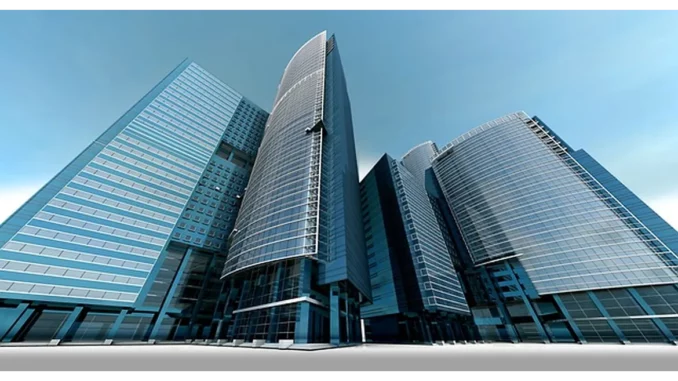
The City of London is on the brink of a significant transformation with the likely approval of the 36-storey development at 60 Gracechurch Street. This ambitious project, a collaboration between developers Sellar and Obayashi, and the Danish architectural firm 3XN, promises to redefine the architectural character of the area. As the City undergoes continuous evolution, the 60 Gracechurch scheme stands as a beacon of contemporary architectural innovation while simultaneously presenting the challenge of harmonising new developments with the City’s rich historical fabric.
Successful low-energy building design hinges on careful planning. Focus360 Energy can help.
The new tower is slated to replace the existing Allianz House, a building from the mid-1990s, markedly increasing the available office space from 13,300 square metres to approximately 52,000 square metres. The design is distinguished by a dynamic facade system featuring angled metal ‘fins’, adorning much of the building’s southern side. This design choice not only enhances the visual appeal of the City’s eastern tower cluster but also positions the tower as a striking addition to the skyline.
The project extends beyond architectural allure, offering a new public realm beneath the tower in a 368 square metre sheltered ‘undercroft’. This space is intended to enrich the urban environment with seating and greenery, providing a sanctuary for public enjoyment. Nonetheless, the proposal has not been without its detractors. Heritage groups and the Department for Culture, Media and Sport have raised objections concerning the potential impact on nearby heritage sites, notably the Grade I-listed St Mary Woolnoth church. These concerns underscore the ongoing debate over how best to integrate modern architectural initiatives within a historically rich context.
The 60 Gracechurch tower is part of a broader trend of high-rise developments along Gracechurch Street, contributing to a burgeoning cluster of towers that are reshaping the southern boundary of the City’s main skyscraper ensemble. This emerging cluster includes several other planned towers, each contributing to the area’s evolving architectural narrative. The design of 60 Gracechurch has been meticulously considered, particularly in relation to its surroundings. The proximity to other tall structures, such as the iconic ‘Walkie Talkie’ at 20 Fenchurch Street, has informed specific design choices, with a notable emphasis on maximising daylight on the western facade. The inclusion of a diagonal “green spine” of terraces on this side serves as a strategic element to break up the building’s massing, ensuring the tower appears less imposing from certain vantage points.
The timeline for the project’s realisation is set, with construction anticipated to commence in 2026 and completion projected for 2029. The development team comprises industry stalwarts such as Turner & Townsend Alinea, Gardiner & Theobald, and Arup, guaranteeing that the project will be managed with the utmost expertise and precision. Their involvement underscores the scale and complexity of the development, as well as its importance to the future of the City’s urban landscape.
As the City of London grapples with the complexities of modern urban development, the 60 Gracechurch tower presents both a formidable opportunity and a significant challenge. The project offers a platform to showcase pioneering design and contribute to the City’s economic vibrancy, while simultaneously posing the difficult task of maintaining a delicate balance between new development and the preservation of historical sites. The forthcoming decision by the committee will be pivotal, not only for the future of 60 Gracechurch but also for the broader trajectory of the City’s skyline.
As London continues to expand and modernise, projects like 60 Gracechurch will play an integral role in shaping the urban fabric, reflecting the City’s dynamic interplay of history and innovation. The outcome of this development will likely serve as a benchmark for future projects that seek to blend the old with the new, ensuring that the City remains a beacon of architectural excellence and cultural heritage.


Be the first to comment